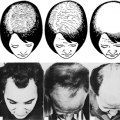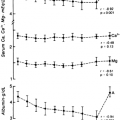MOLECULAR BIOLOGY OF PARATHYROID HORMONE
Part of “CHAPTER 51 – PARATHYROID HORMONE“
CHARACTERISTICS OF THE NORMAL PARATHYROID HORMONE GENE
The structural characterization of messenger RNAs (mRNAs) and genes encoding preproPTH from several mammalian species (i.e., humans, cattle, pigs, dogs, and both rats and mice) and one avian species (i.e., chicken) has been accomplished using the techniques of molecular biology.8,9,10,11 and 12 In mammals, mature PTH has 84 amino acids, but the chicken form has 88 amino acids. The preproPTH gene is organized into three exons: exon I encoding the 5′ untranslated region, exon II encoding the pre-propeptide coding region and part of the prohormone cleavage site recognition sequence, and exon III encoding the Lys 2-Arg 1 of the prohormone cleavage site, the 84 amino acids of the mature hormone, and the 3′ untranslated region.
Some of these organizational features are shared with the PTHrP gene, in which the same functional domains—the 5′ untranslated region, prepro region of the precursor peptide, and the prohormone cleavage site and most or all of the mature peptide—are encoded by single exons13,14,15 and 16 (Fig. 51-2; see Chap. 52). For PTHrP, exons encoding alternative 5′ untranslated regions, carboxyl-terminal peptides, and 3′ untranslated regions may also exist, depending on the species.
Stay updated, free articles. Join our Telegram channel

Full access? Get Clinical Tree





